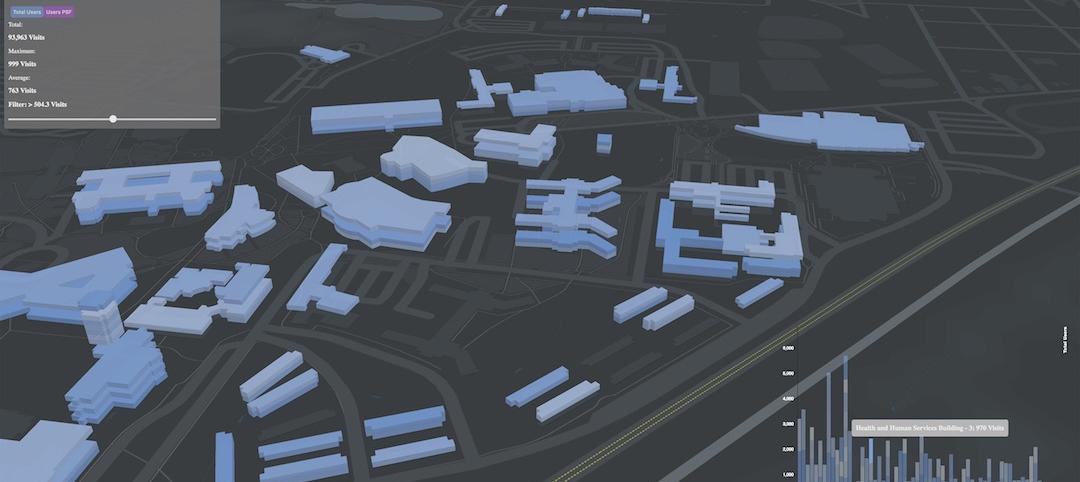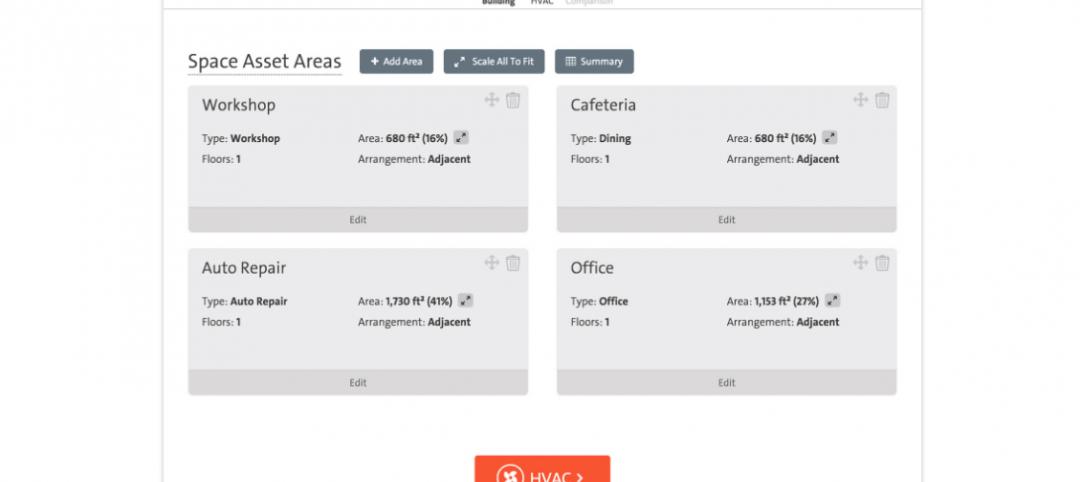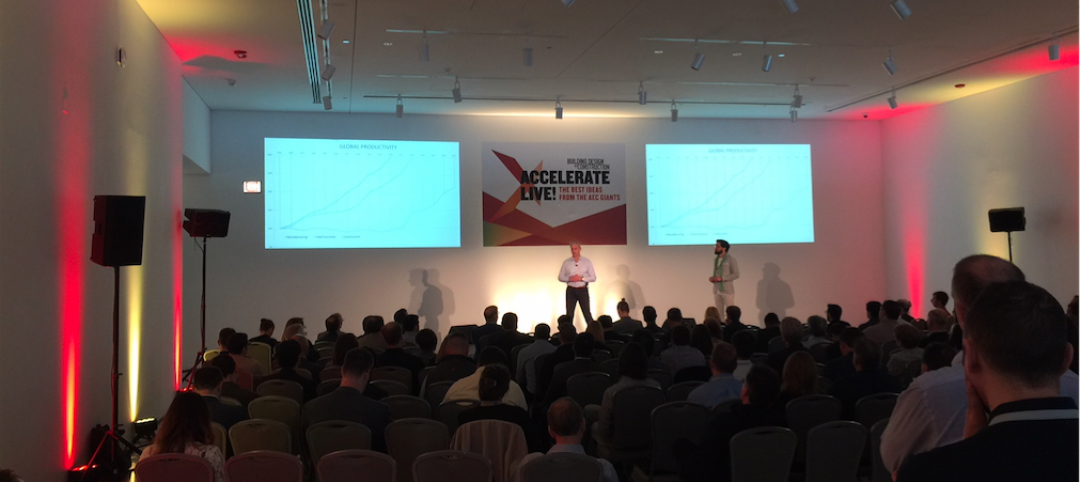
Collaboration software is going beyond just sharing files. It is being used to enable full building information modeling early in design. Two programs are enabling Building Teams to more easily share the information in BIM and use it for integrated project delivery: Bluebeam Software, which just released the newest version of its AEC-specific PDF collaboration tool; and eBuilder Enterprise, a Web-based capital project and program management tool used by owners and real estate professionals.
PDF Revu 8: beyond PDF markup to file management
Architects and contractors have been using paperless tools such as Bluebeam PDF Revu for much of the past decade. Over its first seven previous versions Bluebeam has evolved from a PDF creation tool born in the aerospace industry to one of the most popular PDF markup and revision tools in the AEC market.
The company's latest release, Bluebeam PDF Revu 8 (CAD edition), is moving beyond digitizing paper to full project collaboration and management. It features Microsoft SharePoint and Bentley ProjectWise integration and a new file manager that lets users search, “pin,” and integrate their documents with other users' systems. The new version also has a Revit plug-in that can integrate it with Revu.
“We don't speak in terms of being a PDF editor anymore,” Bluebeam CEO Richard Lee told me. “We're really focused on providing workflow and collaboration software. You will see in the future a lot of functionality and features designed around how people work. The fact that it is in PDF is just convenient.”

The most noticeable change in Revu 8 is a new “file access tab” on the left panel of the user interface. It allows mouse-over preview of any PDF and shows the location of the file, whether it's on your hard drive or in a shared project management program such as SharePoint. The access tab's history area gives a quick view of all of the PDF files you looked at recently.
“Users told us, 'I want to be able to get to the PDFs I work with quickly, whether they're on a SharePoint drive or on my machine,'” said Don Jacob, VP of engineering at Bluebeam. “Our mid-size to large AEC users want better integration.”
The SharePoint integration offers an easy connection to files in the document management platform. A new explorer panel, similar to Windows Explorer, is embedded in the file access tab in Revu 8. From that panel you can automatically navigate the SharePoint library and check files in and out without having to switch between Bluebeam and SharePoint.
You can also check version histories of files in the library from the explorer and “pin” them to projects and documents on your hard drive. The functionality seems to work similarly for ProjectWise, but I couldn't try that one out, as I was unable to obtain a review copy of ProjectWise.
The “pinning” feature, itself is a new addition that addresses a major pain point many architects and contractors have when managing project files: keeping them together and organized. With two mouse clicks you can pin any file and it will stay in your access tab (with a pushpin designating its file as such) with all of its history information available to you on mouse-over. You can pin files to a project or a group of projects.

The tool sets are also improved in Revu 8. Some of the new markup tools include representations of people (good for scale) and welding markups for fabrication drawings. The personal toolbar in Revu 8 is more customizable, too, allowing you to add any Revu 8 function to it. This is good for companies that use one toolbar layout for architects, a different one for engineers, and even more customized layouts for super-users.
Finally, one of the smallest but best additions to Revu 8 is hyperlinking within annotations for fabrication drawings. Many subcontractors and fabricators bemoan the lack of reference documentation in computer-generated shop drawings. How can you access “Appendix 6” when all you've been given is “page 300?” By adding actions to an annotation, anyone who has page 300 automatically also receives a hyperlink to Appendix 6 in Revu 8. In the war against paper-based workflows, it's the small victories such as this that will carry the day for paperless.
E-Builder: Integrated for project management
E-Builder Enterprise is a Web-based project and program management application that helps facility owners and operators—and the AEC companies that provide services to them—address the challenges associated with the planning, design, construction, and operation of complex capital projects.
E-Builder clients are primarily facility owners with ongoing capital programs (e.g., additions, renovations, new facilities), such as Inova Health System. All that users need to use the system is a browser, username, and password, and it can be accessed anywhere via the Web. Some of the core aspects of the system include cost control, schedule management, change management, and construction administration.
“The entire e-Builder system is SAS 70 Type II certified,” said Jonathan Antevy, CEO of e-Builder. “It's a significant on-going investment but it has become the standard that our clients demand of us.” Antevy says that his company has been developing Web based software-as-a-service (SaaS) since its founding in 1995. “Our business is not built for a specific platform like Windows or Mac,” he says. “It is built for the Internet.””=
Duke University Health System in Durham, N.C., is currently using eBuilder on the 600,000-sf, $559 million addition to the Duke Medicine Pavilion. The project, which started rolling in 2009, will add 160 critical care ICU stepdown beds and 16 new operating rooms to the pavilion. The addition has been designed to achieve LEED Silver certification.
“We did a one-way integration of all of the financial information for the project from our SAP system into e-Builder,” said Mark Greenspan, director of facility planning, design, and construction at Duke Medical Center. “Our accounting departments tracks overall costs in the SAP system, but our project managers needed that information at a more granular level. It was fairly simple to get that information imported from SAP into e-Builder in the format we could use.”
Another eBuilder project is the Advanced Health Sciences Pavilion at Cedars-Sinai Medical Center in Los Angeles, an 800,000-sf, $400 million new hospital that is integrating e-Builder's tools with the Solomon accounting system.
Project managers at Cedars-Sinai—which broke ground last summer and is expected to be completed in 2012—use e-Builder to check monthly audit reconciliations, as well as for budgeting, archival processing, and storage of construction documents and meeting minutes.
“We needed our information more directly available to us,” said Robert Cull, executive project director for facilities planning, design and construction at Cedars-Sinai.
Both of these projects are using BIM files cataloged in e-Builder Enterprise. E-Builder supports BIM review by allowing users to work with BIM files without third-party software via an integrated Autodesk Navisworks viewer. You can upload a BIM file into e-Builder published to the .NWD file format, which includes all loaded models, the scene's environment, the current view, and favorite viewpoints, so that you can view the file and its animation without Navisworks or another translator.
“The changes that someone on a project makes cause other changes that we can control and automate with our process and workflow tools, ” Antevy said. “We give our clients the ability to focus on process instead of technology.”
Related Stories
Sponsored | BIM and Information Technology | Oct 15, 2018
3D scanning data provides solutions for challenging tilt-up panel casino project
At the top of the list of challenges for the Sandia project was that the building’s walls were being constructed entirely of tilt-up panels, complicating the ability to locate rebar in event future sleeves or penetrations would need to be created.
BIM and Information Technology | Aug 16, 2018
Say 'Hello' to erudite machines
Machine learning represents a new frontier in the AEC industry that will help designers create buildings that are more efficient than ever before.
BIM and Information Technology | Aug 16, 2018
McKinsey: When it comes to AI adoption, construction should look to other industries for lessons
According to a McKinsey & Company report, only the travel and tourism and professional services sectors have a lower percentage of firms adopting one or more AI technologies at scale or in a core part of their business.
BIM and Information Technology | Jul 30, 2018
Artificial intelligence is not just hysteria
AI practitioners are primarily seeing very pointed benefits within problems that directly impact the bottom line.
AEC Tech | Jul 24, 2018
Weidt Group’s Net Energy Optimizer now available as software as a service
The proprietary energy analysis tool is open for use by the public.
Accelerate Live! | Jul 17, 2018
Call for speakers: Accelerate AEC! innovation conference, May 2019
This high-energy forum will deliver 20 game-changing business and technology innovations from the Giants of the AEC market.
BIM and Information Technology | Jul 9, 2018
Healthcare and the reality of artificial intelligence
Regardless of improved accuracy gains, caregivers may struggle with the idea of a computer logic qualifying decisions that have for decades relied heavily on instinct and medical intuition.
BIM and Information Technology | Jul 2, 2018
Data, Dynamo, and design iteration
We’re well into the digital era of architecture which favors processes that have a better innovation cycle.
Accelerate Live! | Jun 24, 2018
Watch all 19 Accelerate Live! talks on demand
BD+C’s second annual Accelerate Live! AEC innovation conference (May 10, 2018, Chicago) featured talks on AI for construction scheduling, regenerative design, the micro-buildings movement, post-occupancy evaluation, predictive visual data analytics, digital fabrication, and more. Take in all 19 talks on demand.
BIM and Information Technology | Jun 12, 2018
Machine learning takes on college dropouts
Many schools use predictive analytics to help reduce freshman attrition rates.
















